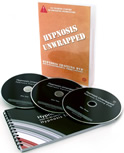
Meditation melts habit-energies, mental filters, and other
distortions that keep us from seeing things simply and clearly as they
are. We can access this transformation at first only inwardly, but with
practice, meditation comes with us into the full flow of life.
_________________________
Some people may experience more of a sense of widening beyond their ideas of who they are, and others may feel a pure stream of love rising up in their core. Some people may just continue doing what they love to do for decades before they realize they have been meditating all along. The rare but attainable space of meditation clearly reveals our experience of separateness as illusory, but also dissolves that distortion.
The word "meditation" confuses us - we mistakenly assume meditation is something stiff and formal, something we have to force ourselves do, something we get from outside and then implant in ourselves. We often imagine it means to sit very still for a long time. And then many of us assume it is something only other people can really do well, because we never find ourselves on fire with life just from sitting with our legs crossed, from copying the statues, from imitating the external form of someone else's spiritual passion. The word "meditation" confuses us because it does not fit accurately into words.
However, if we can unglue ourselves from the exterior forms of meditation, we can start to feel our way into the familiar but mysterious waters of meditation in us.
Sometimes techniques from the outside, such as feeling the breath or repeating a mantra, can help lead us deeply enough toward true meditation that we can then let go of the technique and experience life from the inside. As we relax beyond our usual controls and filters, we can let go more and more of the need for outer confirmation of the liveliness of our own experience. Then we may fall into transformative meditation.
Once we accept that meditation is an attainable, human experience - but beyond ideas - we may start to rest our heads and trust that we can also awaken it in us and stumble on it everywhere around us.
Ordinary life gives us glimpses of where we can start to awaken our natural capacity for meditation:
1. On just waking up, you may have occasionally sensed spaciousness and lightness - usually only briefly, before you remembered your list of things to do, your resentment, fears, or demands that life be different. Before looking at life again with the head, perhaps you sensed a noninvasive limitlessness infused with friendliness. This openness - much closer to meditation than hours of practicing a technique - can feel incredibly sensitive and exposed. The rush back to being busy and copying the past can feel like hurrying to get dressed when we realize we are naked.
2. Often on Open Dharma retreats, or other times when we let ourselves rest deeply, we may receive a teaching from our own inner native language. Sometimes this pointer comes as a soft memory from when we knew real intimacy with life, through nature or love or play as a child. Other times this weightless reference point may be a spontaneous image that helps unravel our sense of separation.
These moments of distilled life can help us uncover our genuine way of coming home to openness.





